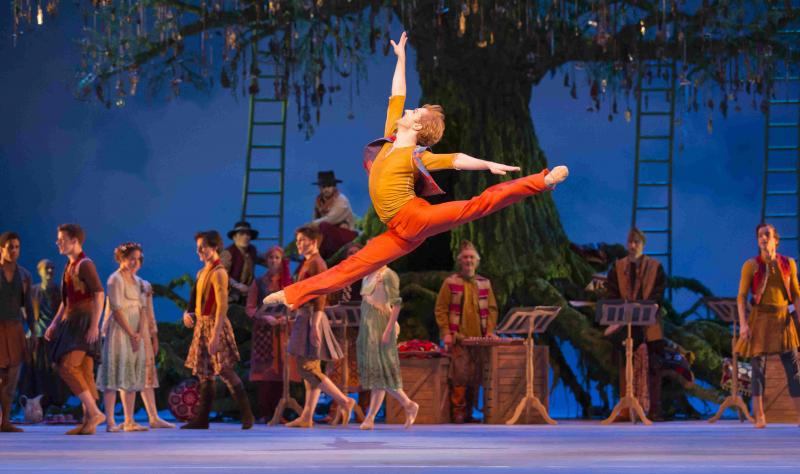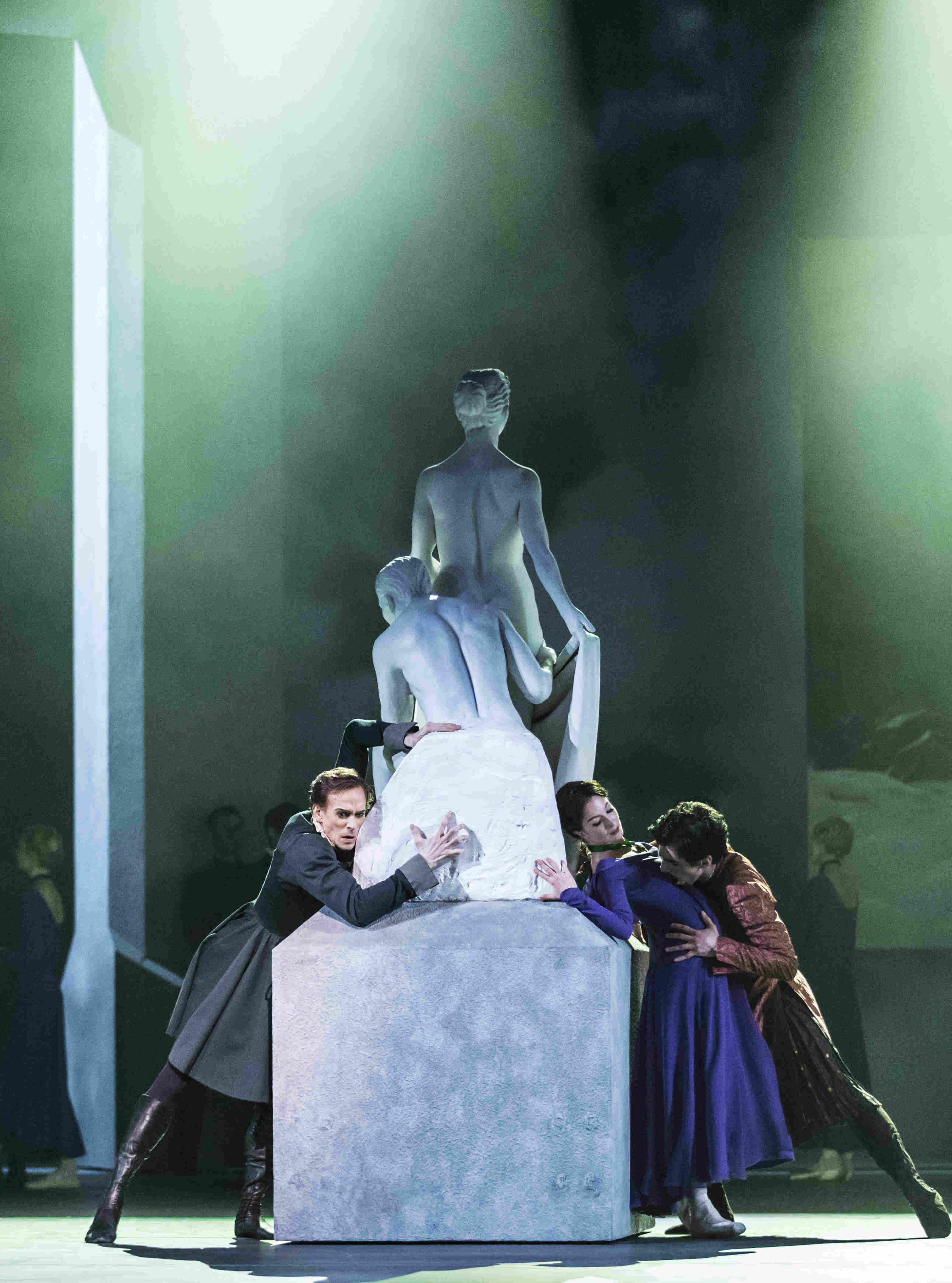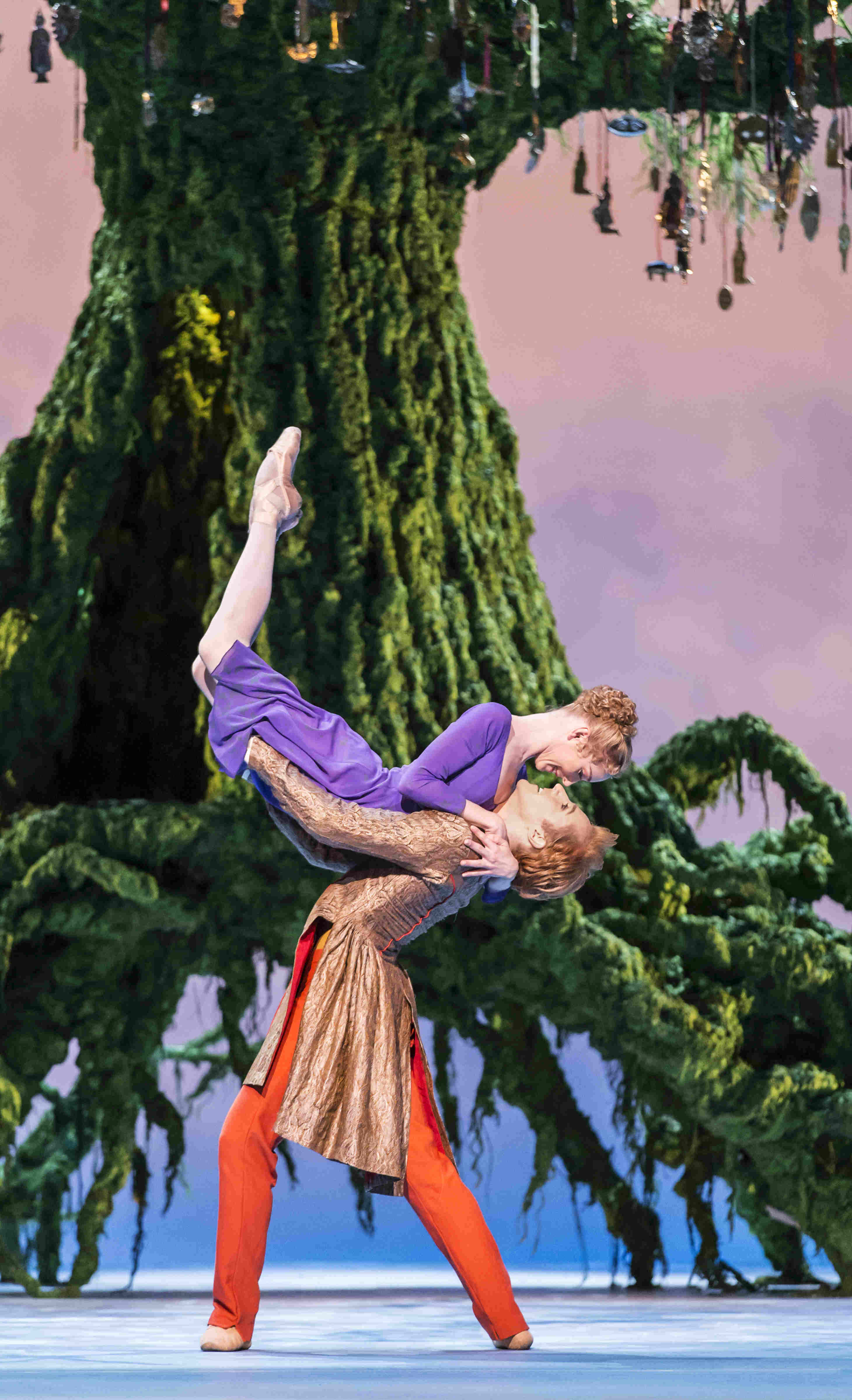The Winter's Tale, Royal Ballet | reviews, news & interviews
The Winter's Tale, Royal Ballet
The Winter's Tale, Royal Ballet
A brand-new, beautiful Shakespeare ballet to open the spring season

Another week, another major British ballet company takes on a key cultural patrimony in a brand-new work. It might seem odd that the Royal Ballet’s new Winter’s Tale generates more critical reservations than English National Ballet’s take on the First World War, though the two evenings succeed and fail in almost equal measure.
In the case of The Winter’s Tale, such a hope is especially naïve, so oddly does the Tale mix tragedy, comedy, pastoral and romance, and play with time, space and logical possibility in ways that call deliciously on imagination. Of course that trickiness will have made it a theatrical nut all the more tempting for the Christopher Wheeldon team - composer Joby Talbot, designer Bob Crowley and lighting designer Natasha Katz, who all worked with the choreographer on Alice’s Adventures in Wonderland for the Royal Ballet in 2011, a production which established their joint flair for the fantastical, theatrical, and profitable.
 Like Alice, The Winter’s Tale is a triumph of design, abounding in beauty and clever touches: the colouring of the two kings' retinues in contrasting warm and cool shades; the steep stairs down which a crazed Leontes, and then his dying infant son (teddy in hand), stumble; the fabulous, gnarly, green and glass-hung Tree of Life in Bohemia (pictured below left); the colourful Central Asian skirts and patched jerkins of the male peasants, which whirl so pleasingly as they dance.
Like Alice, The Winter’s Tale is a triumph of design, abounding in beauty and clever touches: the colouring of the two kings' retinues in contrasting warm and cool shades; the steep stairs down which a crazed Leontes, and then his dying infant son (teddy in hand), stumble; the fabulous, gnarly, green and glass-hung Tree of Life in Bohemia (pictured below left); the colourful Central Asian skirts and patched jerkins of the male peasants, which whirl so pleasingly as they dance.
The very first scene both teases and reassures those fearing that tragedy might be lost under too liberal a repeat dose of Alice’s whimsy: as silver paper flutters from the ceiling (a Wheeldon/Crowley/Talbot/Katz trademark), a black background and diagonal white light strongly recall the first, graveside, scene of Kenneth MacMillan’s black psychodrama, Mayerling.
Bob Crowley’s plain frock coats and a Caspar David Friedrich painting on the wall of Leontes’ palace subtly evoke an 1820s Germany of repressive suspicion. Pale, brooding Edward Watson (pictured above right) seems intuitively a good choice for jealous Leontes, but he and Wheeldon channel rather too much of MacMillan’s eye-rolling, volatile Crown Prince Rudolf, and Watson over-acts destructive paranoia to the point of bathos (standing on one leg to convey inner turmoil?). The gorgeous dignity of Lauren Cuthbertson as his falsely accused queen, Hermione, is a greater acting triumph.
It’s an unalloyed pleasure to see two of the company’s best actors in important roles, Bennet Gartside as the honest, harried Antigonus and Zenaida Yanowsky as his furious, morally uncompromising wife, Paulina. Their hurried adieu with the brief kiss of long marriage is heartrending, for Antigonus will shortly fall victim to that infamous bear. This animal, portrayed by a billowing sheet, is far less terrifying than the storm to which Antigonus has just abandoned Hermione's baby, an animatronic prop whose sudden waving of arms is startlingly effective (“Ye gods, that's not a real baby?!” was the audible thought as 100 hands reached for opera glasses).
 Narrative slows down in Wheeldon’s Act II (Shakespeare’s Acts III and IV), as the play’s switch to comedy and pastoral allows him to exercise his much greater talent for choreographing the pretty and the joyful (realised in great turns from Valentino Zucchetti and Beatriz Stix-Brunell). Delightful, springy Steven McRae as Florizel does his best to warm up Sarah Lamb’s Perdita (pictured left), whose characterisation of the shepherdess-princess is more dignified than passionate (though she dances, as she ought to, "featly").
Narrative slows down in Wheeldon’s Act II (Shakespeare’s Acts III and IV), as the play’s switch to comedy and pastoral allows him to exercise his much greater talent for choreographing the pretty and the joyful (realised in great turns from Valentino Zucchetti and Beatriz Stix-Brunell). Delightful, springy Steven McRae as Florizel does his best to warm up Sarah Lamb’s Perdita (pictured left), whose characterisation of the shepherdess-princess is more dignified than passionate (though she dances, as she ought to, "featly").
The surprise let-down in the Bohemian idyll (aside from the excellently angry interruption of Federico Bonelli’s disguised Polixenes) is Talbot’s music: though sufficiently fantastical, the shimmering soundworld he creates seems too spare for the dancing. I'd have liked to hear more of the sweeping lyricism deployed at Hermione’s trial: his more usual painting in sound just won’t stick in the brain (one snatch of Massenet recalled by a pas de deux lift from Manon has driven all Talbot’s score out of mine).
The mostly deft handling of the plot stumbles at the last hurdle: it’s understandable to transfer the play’s offstage reunion onto the stage (happy wedding dancing is de rigueur for story ballets, don’t you know!), but it robs the statue scene of some of its solemnity. And Wheeldon gives Hermione a pas de deux of (muted) reconciliation with Leontes before she sees their daughter, Perdita. Although there are grounds for it in comments from other characters ("she embraces him" - "she hangs about his neck") and it produces lovely acting from Cuthbertson and Watson, this seems too much – Shakespeare has Hermione speak only to her daughter, vouchsafing no word of forgiveness to her abusive husband. Thank heavens for Yanowsky, whose expressive hands and back in the last tableau, allow us all to share Paulina’s grief for the other innocent victims of Leontes’ rage.
Generally, Wheeldon and team have delivered a gorgeous staging with many strengths, not least several fine roles. It's harder to predict if this Tale has the intrinsic depth and fascination to keep it in the repertory after the glorious sets have mouldered and everyone has stopped caring about the bear. I'd go back for design and dancing (not least to see the second cast, Marianela Nuñez as Hermione, Laura Morera as Paulina, Stix-Brunell and Vadim Muntagirov as Perdita and Florizel). Choreography and music need a second viewing too, though that is as much reservation as it is praise.
- The Winter's Tale at the Royal Opera House until 12 May
rating
Explore topics
Share this article
The future of Arts Journalism
You can stop theartsdesk.com closing!
We urgently need financing to survive. Our fundraising drive has thus far raised £49,000 but we need to reach £100,000 or we will be forced to close. Please contribute here: https://gofund.me/c3f6033d
And if you can forward this information to anyone who might assist, we’d be grateful.

Subscribe to theartsdesk.com
Thank you for continuing to read our work on theartsdesk.com. For unlimited access to every article in its entirety, including our archive of more than 15,000 pieces, we're asking for £5 per month or £40 per year. We feel it's a very good deal, and hope you do too.
To take a subscription now simply click here.
And if you're looking for that extra gift for a friend or family member, why not treat them to a theartsdesk.com gift subscription?
more Dance
 'We are bowled over!' Thank you for your messages of love and support
Much-appreciated words of commendation from readers and the cultural community
'We are bowled over!' Thank you for your messages of love and support
Much-appreciated words of commendation from readers and the cultural community
 R:Evolution, English National Ballet, Sadler's Wells review - a vibrant survey of ballet in four acts
ENB set the bar high with this mixed bill, but they meet its challenges thrillingly
R:Evolution, English National Ballet, Sadler's Wells review - a vibrant survey of ballet in four acts
ENB set the bar high with this mixed bill, but they meet its challenges thrillingly
 Like Water for Chocolate, Royal Ballet review - splendid dancing and sets, but there's too much plot
Christopher Wheeldon's version looks great but is too muddling to connect with fully
Like Water for Chocolate, Royal Ballet review - splendid dancing and sets, but there's too much plot
Christopher Wheeldon's version looks great but is too muddling to connect with fully
 iD-Reloaded, Cirque Éloize, Marlowe Theatre, Canterbury review - attitude, energy and invention
A riotous blend of urban dance music, hip hop and contemporary circus
iD-Reloaded, Cirque Éloize, Marlowe Theatre, Canterbury review - attitude, energy and invention
A riotous blend of urban dance music, hip hop and contemporary circus
 How to be a Dancer in 72,000 Easy Lessons, Teaċ Daṁsa review - a riveting account of a life in dance
Michael Keegan-Dolan's unique hybrid of physical theatre and comic monologue
How to be a Dancer in 72,000 Easy Lessons, Teaċ Daṁsa review - a riveting account of a life in dance
Michael Keegan-Dolan's unique hybrid of physical theatre and comic monologue
 A Single Man, Linbury Theatre review - an anatomy of melancholy, with breaks in the clouds
Ed Watson and Jonathan Goddard are extraordinary in Jonathan Watkins' dance theatre adaptation of Isherwood's novel
A Single Man, Linbury Theatre review - an anatomy of melancholy, with breaks in the clouds
Ed Watson and Jonathan Goddard are extraordinary in Jonathan Watkins' dance theatre adaptation of Isherwood's novel
 Peaky Blinders: The Redemption of Thomas Shelby, Rambert, Sadler's Wells review - exciting dancing, if you can see it
Six TV series reduced to 100 minutes' dance time doesn't quite compute
Peaky Blinders: The Redemption of Thomas Shelby, Rambert, Sadler's Wells review - exciting dancing, if you can see it
Six TV series reduced to 100 minutes' dance time doesn't quite compute
 Giselle, National Ballet of Japan review - return of a classic, refreshed and impeccably danced
First visit by Miyako Yoshida's company leaves you wanting more
Giselle, National Ballet of Japan review - return of a classic, refreshed and impeccably danced
First visit by Miyako Yoshida's company leaves you wanting more
 Quadrophenia, Sadler's Wells review - missed opportunity to give new stage life to a Who classic
The brilliant cast need a tighter score and a stronger narrative
Quadrophenia, Sadler's Wells review - missed opportunity to give new stage life to a Who classic
The brilliant cast need a tighter score and a stronger narrative
 The Midnight Bell, Sadler's Wells review - a first reprise for one of Matthew Bourne's most compelling shows to date
The after-hours lives of the sad and lonely are drawn with compassion, originality and skill
The Midnight Bell, Sadler's Wells review - a first reprise for one of Matthew Bourne's most compelling shows to date
The after-hours lives of the sad and lonely are drawn with compassion, originality and skill
 Ballet to Broadway: Wheeldon Works, Royal Ballet review - the impressive range and reach of Christopher Wheeldon's craft
The title says it: as dancemaker, as creative magnet, the man clearly works his socks off
Ballet to Broadway: Wheeldon Works, Royal Ballet review - the impressive range and reach of Christopher Wheeldon's craft
The title says it: as dancemaker, as creative magnet, the man clearly works his socks off
 The Forsythe Programme, English National Ballet review - brains, beauty and bravura
Once again the veteran choreographer and maverick William Forsythe raises ENB's game
The Forsythe Programme, English National Ballet review - brains, beauty and bravura
Once again the veteran choreographer and maverick William Forsythe raises ENB's game

Add comment